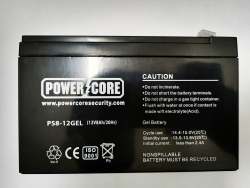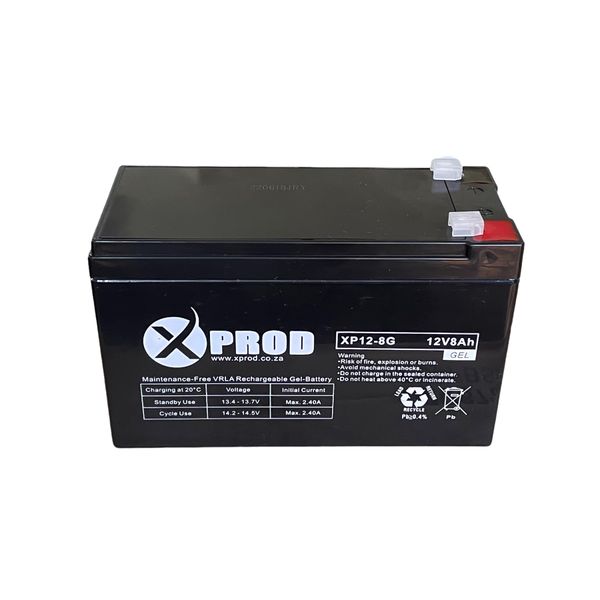Description
The article discusses the differences between AGM and GEL technology batteries. AGM batteries are preferred when a burst of amps is required, can last for years, and can be easily recharged. Gel batteries are better suited for warmer environments and have a lower power capacity. However, they are not as good for slow discharge rates and do not perform well in below freezing temperatures.
IDS 12V 8A GEL BATTERY
Unlike lead acid batteries that would deplete faster in-terms of cycles the gel battery will offer abit of more power in endurance and cycles.
When Gel batteries were introduced into the industry, they were roughly 4 times the cost of a lead acid battery. Today, a gel battery will cost roughly 30% more than that of a wet lead acid battery with none of the headaches, maintenance, or charging issues.
Ideal for gate motors, alarm systems and CCTV, General Purpose Electronics, Security Systems, Rechargeable Electronics, Computer Battery Back-up Systems (UPS), Portable Power Supplies, etc
Features:
- Gel Battery
- Nominal Voltage: 12V
- 8AH capacity
- 2.4A max charge current
- Cycle use: 14.5 - 14.9V
- Standby use: 13.6 - 13.8V
What's in the box
1 x Gel Battery 12V 8A
Battery 101: AGM vs. GEL Technology
The technology used to create batteries has come a long way since the time of glass cells and wooden encasements.
Now we have specialized technology and advancements and it can get confusing trying to keep it all straight. So, wed like to untangle some of this confusion by asking the question: What is the difference between AGM and GEL technology?
Before we dive feet first into the differences between the two, lets take a look at what exactly each of them is.
AGM Batteries
AGM technology stands for Absorbent Glass Mat. That explanation alone sounds ridiculous but wait. The absorbent glass mat refers to a fine fiberglass mat that is capable of absorbing sulfuric acid, making batteries spill proof. Makes more sense now right? In the 1980s the demand was increasing for lighter weight and less hazardous batteries that could be used in aircraft and vehicles.
AGM technology allowed this demand to be met. All of a sudden batteries could be transported without hazardous material issues and the construction of the mat meant that batteries could now be shaped as a cylinder or the traditional rectangular cube.
GEL Batteries
GEL technology is another matter altogether. A gel cell battery is a battery that uses a sulfuric acid that has been mixed with fumed silica to create a gel-like substance that is immobile. Because of the GEL cell, the battery does not have to be kept upright and the electrons can flow between the plates without the threat of spilling.
These batteries produce few fumes which make them ideal to be used in places that dont have much ventilation.
Know that we have a better understanding of them, lets compare em.
The Differences
While these batteries are not the same, there are similarities that cause people to confuse the two. They are both non-spillable, are deep cycle (meaning they can be deeply discharged), and can be transported safely among other things. So what sets them apart?
Preferable when a burst of amps is required.
Can last for years.
Can be easily recharged, in some cases up to 5 times faster.
Can be produced at a lower cost than gel batteries.
Have a low internal resistance.
Perform well in temperatures below 32 degrees.
Lower power capacity.
Does well in warmer environments.
Does well with slow discharge rates.
If recharged incorrectly the battery will failure before the end of its life cycle.
Not suitable to be used as starter batteries because of an increased acid resistance.
Do not perform well in below freezing temperatures.













